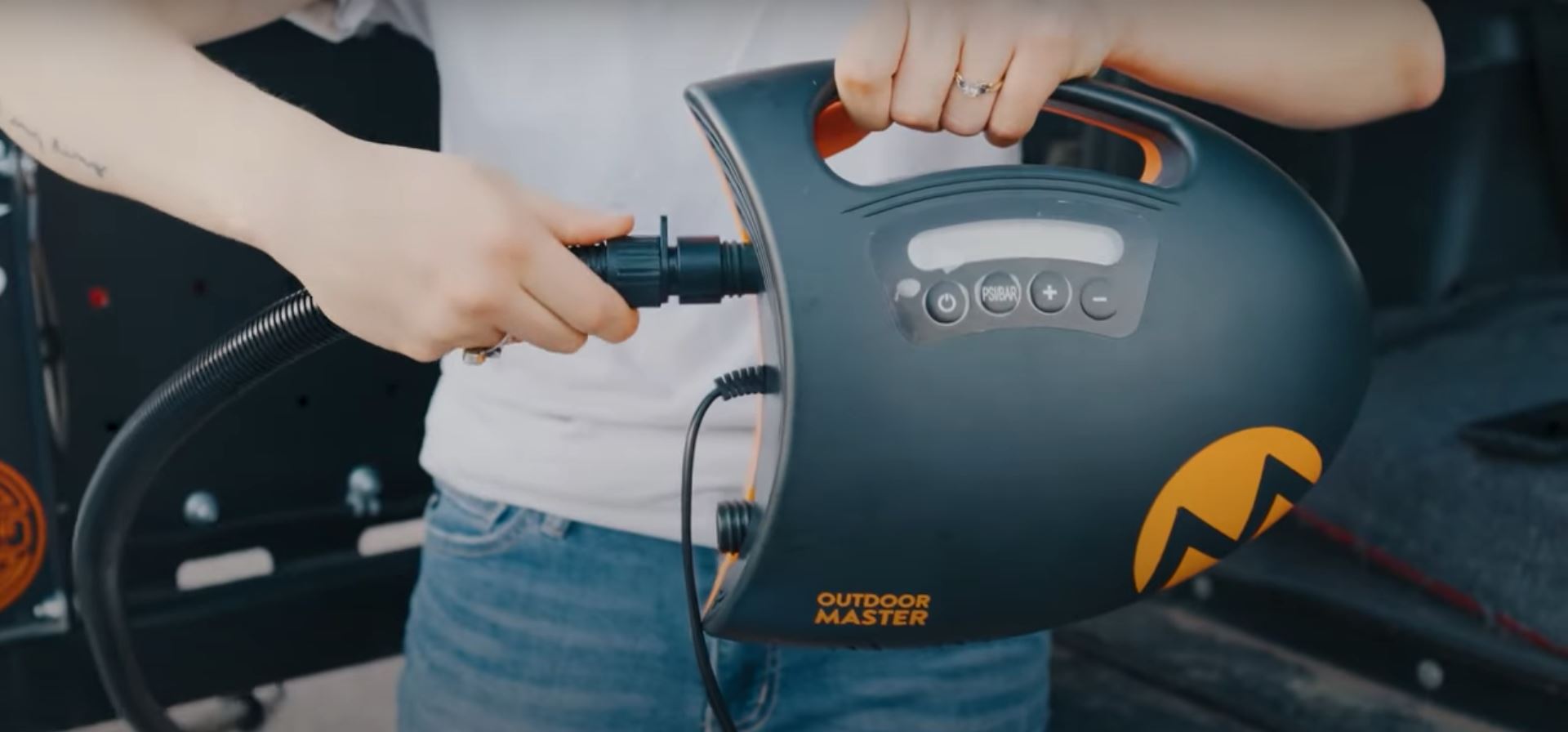Paddleboarding combines the tranquility of being on water with a full-body workout! Any SUP lover should already know that getting your SUP ready for action is a must for the overall experience.
That’s where electric SUP pumps come in! These are invaluable tools that make preparing your board effortless and efficient.
You’ll understand the importance of having excellent electric SUP pumps, like the Flextail MAX, the Outdoor Master Shark II, or similar models after you reach 6 PSI when manually pumping a SUP! Pumping air after the board has reached 6 PSI gets very tough.
Unlike manual pumps, which require significant physical effort and time, electric pumps offer a hassle-free way to inflate your SUP to the optimal pressure. This convenience means more time spent enjoying the water and less time prepping!
However, many enthusiasts face a problem here. There are many different types of electric SUP pumps available. How do you choose the right one for your situation? Well, we made your life easy! Keep reading for a complete buying guide for electric SUP pumps in 2024.
Key Features to Consider When Buying an Electric SUP Pump
Several key features demand your attention when venturing into the market for an electric SUP pump. These features influence the pump’s performance and impact your overall paddleboarding experience. Let’s dive into what you should keep an eye out for:
PSI Ratings
The PSI rating of a pump is a critical factor. Different SUPs require different levels of inflation pressure for optimal performance. Generally, you must inflate your SUP to anywhere between 12 to 15 PSI. Ensure that the electric pump you choose can easily reach and, ideally, exceed the required PSI of your board without overexerting itself.
Pump Power Source
You’ll find electric SUP pumps in two main variants: battery-powered and vehicle-powered. Battery-powered pumps offer the convenience of portability and are great for locations without immediate access to a vehicle.
On the other hand, vehicle-powered pumps plug into a car’s 12V outlet. These can be more powerful as they don’t depend on battery life. Your choice will depend on where and how you plan to use the pump.
Inflation Speed
Time is precious, especially when you’re eager to hit the water. The inflation speed of a pump is a significant convenience factor. Some electric pumps can inflate a SUP in just a few minutes, while others might take longer.
Digital vs. Analog
Digital pumps offer precise control and easy monitoring of pressure levels, often with automatic shut-off features when the SUP reaches the desired PSI. Analog pumps, while usually more affordable, require more attention during inflation to avoid over or under-inflation.
Portability and Weight
If you want to move around with your SUP, the size and weight of the pump are crucial.
A lightweight, compact pump is easier to carry and store, making it ideal for those with limited space or who frequently travel with their SUP.
Durability and Build Quality
Durability is critical in ensuring your investment lasts. Look for pumps made with high-quality materials and robust construction. A durable pump withstands regular use and the often harsh environments associated with water sports.
Price
Finally, price is always a consideration. Electric SUP pumps come in various prices, often reflecting their features and build quality. While it might be tempting to go for a cheaper option, investing in a higher-quality pump can save you money and hassle in the long run.
For example, the Outdoor Master Shark II, which can pump up to 3 SUPs, costs around 109$. On the other hand, the Flextail MAX SUP pump, which pumps up to 6 SUPs, costs about 219$.
However, this also varies depending on the additional features that an SUP pump may have. So, keep the budget in mind!


